Modena
Modena, a shrine of treasures to discover!
One day among art, food and cars that will make out of your visit a unique experience.
8.00 departure from Milan (Milan – Modena 180 km)
10.15 Guided tour to the Parco Archeologico e Museo all’aperto della Terramara di Montale (Archaeological Park and Montale Terramare Open-air Museum) a 23,000 m2 area including an archaeological area and an open-air museum. The archaoelogical area is protected in a closed structure and the pits can be visited to personally “read” the land for traces of over four centuries of village life. Lying adjacent to the archaeological area, the open-air museum is a full-sized reconstruction of a part of the village, comprising the moat, the embankments with defensive palisades, the gateway to the village, and two large dwellings reconstructed philologically thanks to the data gathered from the excavations. The Terramare were Bronze Age villages that sprang up in Emilia and in the central region of the Po valley around the middle of the second millennium B.C. The settlements were built with artificial fortifications, generally composed of high embankments reinforced with wood palisades and surrounded by moats.
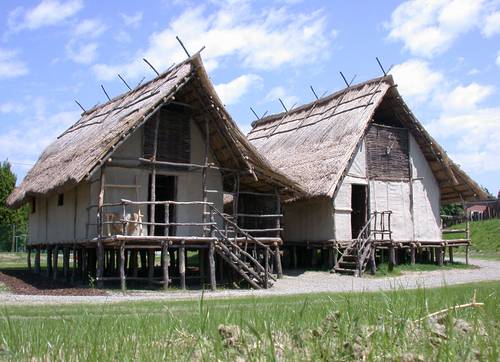
Archaeological Park and Montale Terramare Open-air Museum | Paolo Terzi | © Comune di Modena | 2004
11.15 transfer to Modena city center
11.45 guided tour to Modena Unesco site: the Duomo founded in 1099, the Ghirlandina tower, Piazza Grande. Construction of Modena’s Cathedral (or duomo) began in 1099. Consecrated by Pope Lucius III in 1184, the Cathedral is a masterpiece of the European Romanesque, notable both for Lanfranco’s architectural design and for the marble reliefs on the façade sculpted by Wiligelmus. Modifications to the original project were undertaken between the 12th and 14th centuries by stoneworkers and builders known as the Campionese Masters.
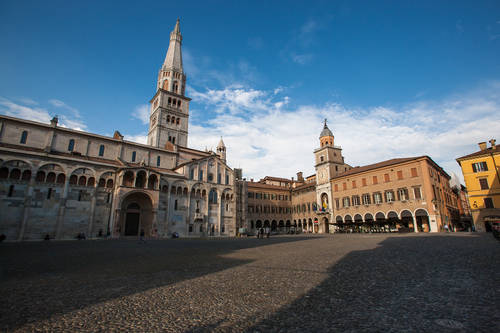
Modena, Duomo and Piazza Grande | Giovanni Tagini | © Circuito Città d’arte della Pianura Padana | 2014
Construction of the initial floors of the Ghirlandina Tower was finished by 1169 and building was completed in 1319 by the Campionese Masters. Eighty-seven meters in height (about 285 feet). The tour will also include a visit to the town hall “Palazzo Comunale” and to the “Acetaia Comunale” a small Traditional Balsamic Vinegar production hosted in the Palazzo.
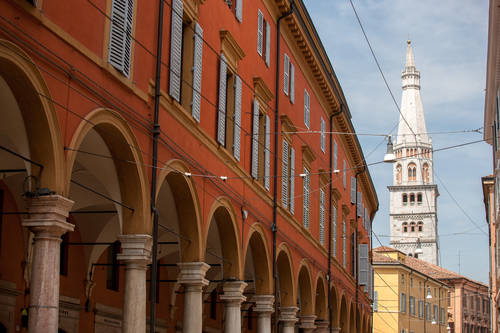
Torre Ghirlandina from Via Emilia | Giovanni Tagini | © Circuito Città d’arte della Pianura Padana | 2014
13.30 Lunch buffet at Caffe Concerto restaurant located on Piazza Grande.
15.00 Guided tour to the Galleria Estense and to Modena civic museums. The Estense Gallery is among the most important Italian art collections and demonstrates the interest of the Este Dynasty not solely in painting and sculpture, but in archeology and traditional arts and crafts. Bernini’s marble bust of Francis I d’Este, a Velasquez portrait of Francis I, Cosmè Tura’s Saint Anthony of Padua, Correggio’s Madonna and Christ Child, an El Greco triptych, and a crucifix by Guido Reni are particularly noteworthy. The collection focuses prominently on painting in the Po River Valley area between the 1300s and the 1700s.
The City Museum of Archaeology and Ethnology houses the earliest evidence of human occupation of the Modena area. Materials from the Neolithic, the Copper Age, the Bronze Age, and the beginning of the Iron Age are accompanied by items attesting to Etruscan, Celt, and Gallic dominion over the city as well as from the era of Roman control. The ethnological collections include textiles, decorative objects, weapons, and ceramics from New Guinea, pre-Columbian Peru, South America, Africa, and Asia. The collections of the City Museum of Art include painting, ceramics, musical and scientific instruments, and weaponry that document the transformations the city has undergone between the Middle Ages and the modern era.
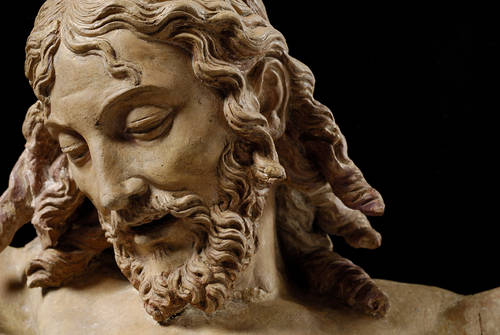
Antonio Begarelli, crucified Christ, about 1540, terracotta | @ Musei Civici di Modena
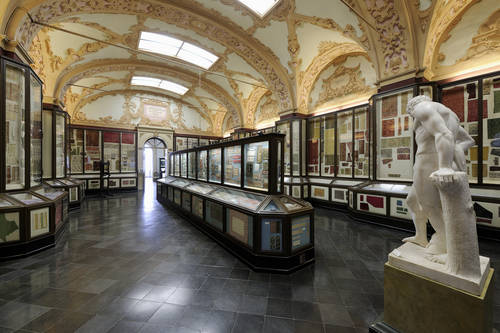
The textile collection of Luigi Alberto Gandini count | Paolo Terzi | @ Musei Civici di Modena
17.30 Guided tour to Enzo Ferrari Museum. Modena is famous for another proud and unique tradition, that of creating dynamic, stylish sports cars, built for speed. Enzo Ferrari was born here, his house now a museum for his iconic racing cars. Enzo Ferrari Museum, also known as MEF, is a combination of two fascinating buildings: in the futuristic 2,500 m2 pillar-free hall, with its ultra-modern yellow-aluminum exterior designed by Jan Kaplicky to resemble the hood of a car, you can admire the many cars exhibited, but also experience a show that – through an immersive biopic screened using 19 projectors – tells Enzo Ferrari’s incredible life story. Nearby, in the house where Enzo was born in 1898, you’ll find an amazing exhibition of Ferrari cars and engines.
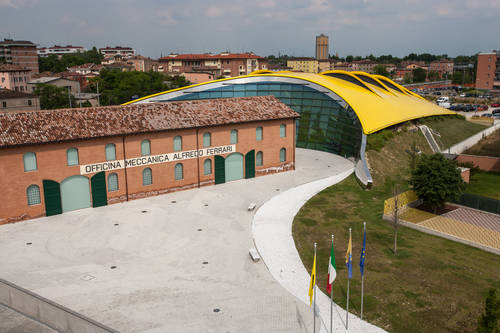
Enzo Ferrari Museum | Giovanni Tagini | ©Circuito Città d’arte della Pianura Padana | 2014
18.30 departure to Milan 20.30 arrival in Milan
More info on:
www.visitmodena.it #visitmodena
http://www.parcomontale.it/montale_english/museo.shtml
http://www.unesco.modena.it/en?set_language=en
http://www.galleriaestense.org/
http://www.museicivici.modena.it/it
http://museomodena.ferrari.com/it/